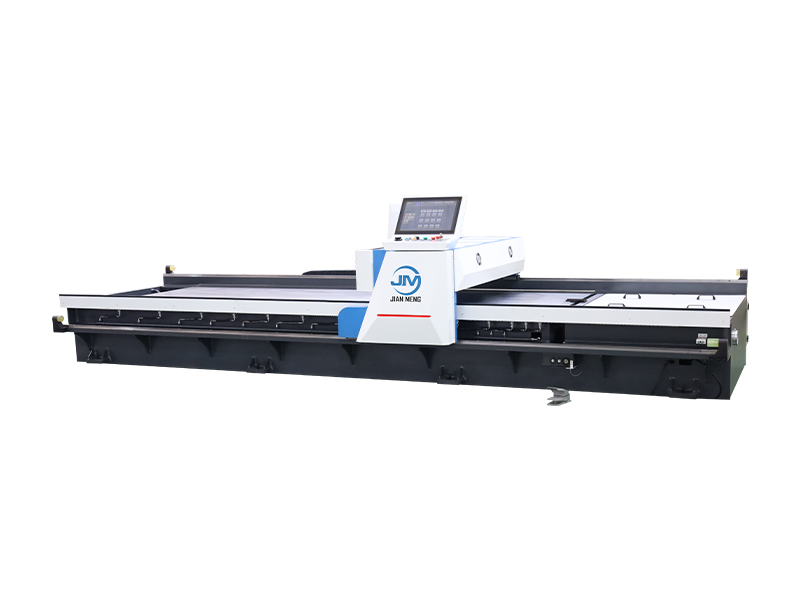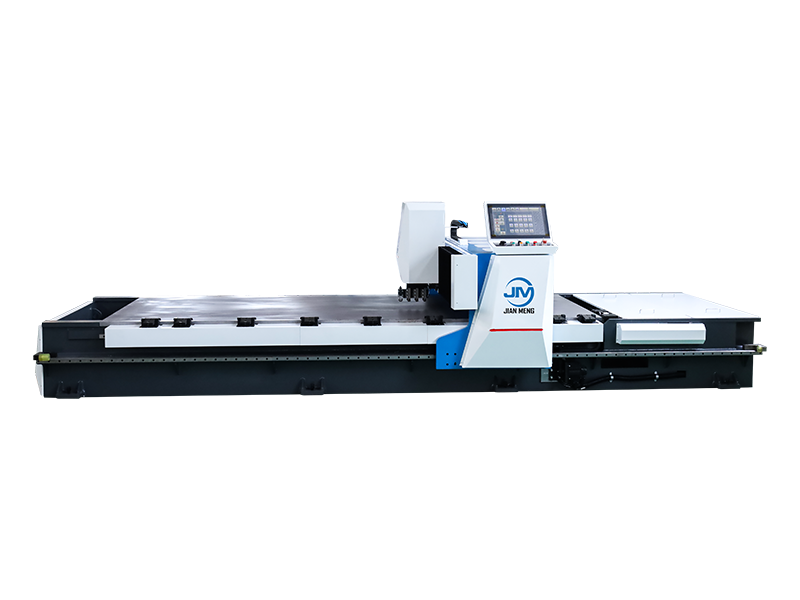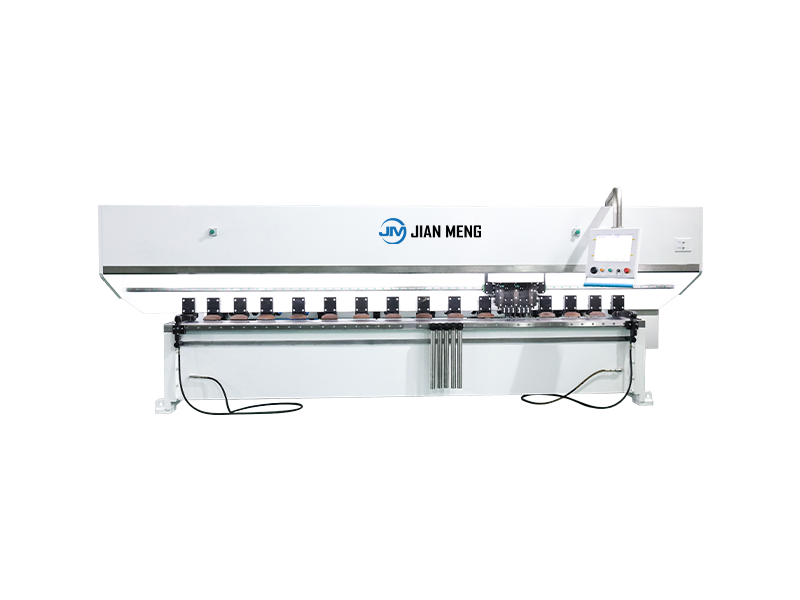Stainless steel—valued for its corrosion resistance (derived from chromium oxide passivation layer), mechanical strength (yield strength: 200–500 MPa for 304/316 grades), and aesthetic versatility—finds widespread use in industries such as medical devices, food processing, aerospace, and architectural hardware. However, machining processes (milling, drilling, laser cutting, welding) of stainless steel inherently generate burrs—undesired material projections that compromise functionality (e.g., interference in precision assemblies), safety (sharp edges causing operator injury), and corrosion resistance (burrs trap contaminants, accelerating localized pitting). Deburring machines tailored for stainless steel address these challenges by removing burrs while preserving the material’s passivation layer and dimensional precision. This technical overview details the necessity, specialized technologies, core advantages, and selection criteria of deburring machines for stainless steel workpieces, with a focus on material-specific process constraints and industrial standards.
1. Why Stainless Steel Requires Specialized Deburring
Stainless steel’s unique properties demand deburring solutions distinct from those for mild steel or aluminum:
- Hardness & Toughness: Austenitic stainless steel (e.g., 304, 316) has a hardness of HRB 70–90 and high ductility, leading to "sticky" burrs (rollover or split burrs) that resist removal by generic tools. Martensitic grades (e.g., 440C, HRC 50–60) generate rigid, sharp burrs requiring high-abrasion methods.
- Passivation Layer Protection: The 2–5 nm thick chromium oxide layer (critical for corrosion resistance) is easily damaged by excessive heat, abrasive scratching, or chemical exposure. Deburring processes must minimize layer disruption (e.g., avoiding temperatures >150°C, using non-reactive abrasives).
- Industry-Specific Standards: Stainless steel components in medical (FDA 21 CFR Part 177) or food sectors require burr-free surfaces (Ra < 0.8 μm) to prevent bacterial buildup; aerospace applications (AS9100) mandate burr removal to avoid fatigue crack initiation.
Deburring machines for stainless steel are categorized by their working principle, each optimized for specific burr types (fillet, split, rollover), workpiece geometries (thin-walled, porous, complex cavities), and production scales. Below is a technical breakdown of mainstream technologies:
2.1 Mechanical Abrasive Deburring Machines
Leverage physical abrasion to remove burrs; ideal for heavy-duty or high-volume applications (e.g., automotive stainless steel exhaust components).
- Abrasive Belt/Disc Machines:
- Principle: Motor-driven belts (abrasive grit: 80–320) or discs (material: aluminum oxide, silicon carbide) grind burrs at controlled feed rates (0.5–3 m/min).
- Technical Specs: Adjustable pressure (10–50 N) to avoid material over-removal; cooling systems (air or water mist) prevent overheating (>150°C) of stainless steel.
- Ideal Use Case: Flat or simple-profile parts (e.g., stainless steel sheets, brackets) with 0.1–1 mm thick burrs.
- Vibratory Deburring Machines:
- Principle: Sinusoidal vibration (10–60 Hz, amplitude 0.5–5 mm) agitates stainless steel parts with specialized media (e.g., ceramic cylinders with SiC grit, 3–10 mm size) to abrade burrs.
- Key Adaptations for Stainless Steel: Use of non-metallic media (to avoid iron contamination, which causes rust spots) and pH-neutral compounds (pH 6–8) to preserve passivation.
- Technical Specs: Cycle time 15–120 minutes; surface finish Ra 0.4–1.6 μm; suitable for small-to-medium parts (e.g., medical instrument components).
2.2 Electrochemical Deburring (ECD) Machines
Use electrolysis to dissolve burrs; ideal for precision stainless steel parts (e.g., aerospace fuel injectors, medical valves) with complex geometries (blind holes, internal threads).
- Principle: Immerse the workpiece (anode) and a tool electrode (cathode) in an electrolyte (e.g., sodium nitrate solution, non-corrosive to stainless steel); apply 5–20 V DC to dissolve burrs (current density: 10–50 A/cm²) while leaving the base material intact.
- Technical Advantages:
- No mechanical contact: Eliminates scratches or passivation layer damage.
- Precision: Removes burrs as small as 0.01 mm in hard-to-reach areas (e.g., M3 threads in 316L stainless steel).
- Standards Compliance: Meets FDA and AS9100 requirements for surface purity.
2.3 Laser Deburring Machines
Use focused laser beams (fiber laser, 1064 nm wavelength) to vaporize burrs; suitable for ultra-precision stainless steel parts (e.g., microelectronics connectors, surgical blades).
- Principle: Laser energy (10–50 W) is targeted at burrs, heating them to 2,500–3,000°C for vaporization; pulse duration (10–100 ns) minimizes heat-affected zone (HAZ < 50 μm) to protect stainless steel’s passivation layer.
- Technical Specs: Positioning accuracy ±5 μm; processing speed 10–50 mm/s; burr size capacity 0.005–0.1 mm.
- Limitations: High cost; not suitable for large burrs (>0.1 mm) or thick workpieces (>10 mm).
2.4 Tumbling Deburring Machines (for Small Parts)
- Principle: Rotating tumblers (barrel or centrifugal) with stainless steel-compatible media (e.g., walnut shells impregnated with alumina, plastic pellets with diamond grit) to deburr parts in bulk.
- Key Adaptation: Centrifugal tumblers (300–800 rpm) for faster processing (cycle time 5–30 minutes) of small parts (e.g., stainless steel fasteners, jewelry components).
3. Core Technical Advantages of Specialized Deburring Machines for Stainless Steel
Beyond generic deburring benefits, stainless steel-specific machines deliver material-aligned value:
3.1 Preservation of Corrosion Resistance
- Use of non-contaminating media (e.g., ceramic, plastic) and pH-neutral compounds prevents iron or chemical-induced rusting. For example, ECD machines with nitrate-based electrolytes maintain the chromium oxide layer’s integrity, ensuring stainless steel meets ASTM A480 corrosion standards.
3.2 Precision Dimensional Control
- Closed-loop feedback systems (e.g., laser profilometers in mechanical machines, current sensors in ECD) limit material removal to 0.01–0.1 mm, preserving critical dimensions (e.g., ±0.05 mm for 316L medical fittings).
3.3 Efficiency & Scalability
- Automated machines (e.g., robotic abrasive deburring cells) process 5–10x more parts per hour than manual methods. For instance, a vibratory machine handling 304 stainless steel fasteners (10 mm diameter) achieves 1,000 parts/hour vs. 100 parts/hour for manual deburring.
3.4 Compliance with Industry Standards
- Machines are calibrated to meet surface finish requirements: Ra < 0.4 μm for food-grade stainless steel (304), Ra < 0.2 μm for surgical-grade 316L, and burr-free edges per ISO 8785 (maximum burr height 0.05 mm for critical components).
4. Technical Selection Criteria for Stainless Steel Deburring Machines
To select the optimal machine, align parameters with workpiece characteristics, production goals, and quality standards:
4.1 Workpiece & Burr Attributes
- Stainless Steel Grade:
- Austenitic (304, 316): Choose vibratory or ECD machines (handles ductile burrs without overheating).
- Martensitic (440C): Select abrasive belt machines (high grit 120–240) for rigid burrs.
- Duplex (2205): Use low-heat laser or ECD (avoids duplex grain structure damage).
- Burr Type & Size:
- Heavy rollover burrs (>0.5 mm): Abrasive belt or centrifugal tumbling.
- Fine internal burrs (0.01–0.1 mm): ECD or laser.
- Workpiece Geometry:
- Thin-walled parts (<1 mm thickness): ECD or low-amplitude vibratory (avoids deformation).
- Complex cavities (e.g., threaded holes): ECD (electrolyte penetrates tight spaces).
4.2 Production Requirements
- Throughput: High-volume (1,000+ parts/hour) → automated robotic abrasive cells or centrifugal tumblers; low-volume (10–50 parts/hour) → manual abrasive or small ECD machines.
- Cycle Time: Critical for just-in-time (JIT) production → laser (fastest for micro-burrs) or centrifugal tumbling (fast for small parts).
4.3 Quality & Compliance Targets
- Surface Finish: Ra < 0.2 μm → laser or ECD; Ra 0.4–1.6 μm → vibratory or abrasive belt.
- Corrosion Testing: ASTM B117 salt spray resistance → ensure machine uses passivation-friendly processes (no iron media, neutral compounds).
4.4 Total Cost of Ownership (TCO)
- Upfront Cost: Laser machines ($50k–$200k) > ECD ($30k–$100k) > vibratory ($10k–$50k) > manual ($1k–$5k).
- Operating Costs:
- Media replacement: Ceramic media ($0.5–$2/kg, 3–6 month lifespan) for vibratory.
- Electrolyte: $5–$10/L (replenished monthly) for ECD.
- Energy: Laser (10–50 W) < ECD (1–5 kW) < abrasive belt (5–15 kW).
5. Application-Specific Examples
- Medical Industry: 316L surgical forceps → ECD deburring (removes internal thread burrs, Ra 0.1 μm, meets FDA 21 CFR Part 177).
- Food Processing: 304 stainless steel conveyor belts → Vibratory deburring (uses plastic media, pH-neutral compound, prevents bacterial traps).
- Aerospace: 17-4 PH stainless steel engine brackets → Laser deburring (removes 0.05 mm edge burrs, HAZ < 50 μm, complies with AS9100).


 English
English  中文
中文  Arabic
Arabic  Russian
Russian  Spanish
Spanish  Portuguese
Portuguese  French
French  German
German  Hindi
Hindi  Thai
Thai  Vietnamese
Vietnamese  Khmer
Khmer  Italian
Italian  Turkish
Turkish  Korean
Korean  Belarusian
Belarusian 





